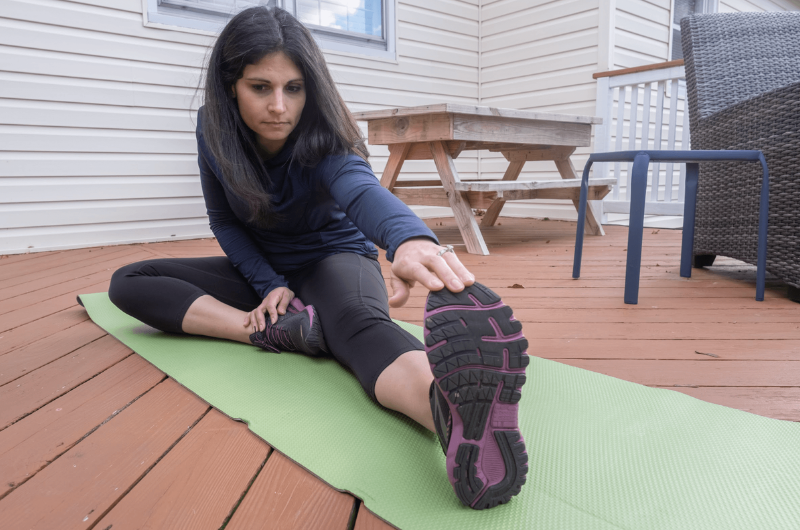Clinical Contributors to this story:
Paula O’Neill, R.N., Carrier Behavioral Health at Raritan Bay Medical Center
Lisa Ferrante, R.N., Carrier Behavioral Health at Raritan Bay Medical Center
You’re in a meeting and your boss just put you on the spot. Your heart races, your palms sweat and your mind goes blank. Or maybe you’re stuck in traffic, surrounded by impatient drivers, and your frustration is mounting. These moments – when stress and anxiety hijack your calm – are opportunities to harness a powerful tool: nervous system regulation.
Understanding Your Nervous System: The Body’s Control Center
Imagine your nervous system as the conductor of a vast orchestra. Every musician (organ, tissue) plays a role, and the conductor ensures harmony. When everything’s in sync, you feel calm and focused. But when chaos ensues, it’s time for the conductor to step in.
There are two primary conductors:
Sympathetic nervous system: Often referred to as the “fight or flight” response, this system kicks in when we perceive a threat, whether it’s a real danger or just a stressful situation. Our heart rate increases, our breathing quickens, and our senses sharpen to prepare us for action.
Parasympathetic nervous system: This is the “rest and digest” part of the nervous system. It helps our body recover after a stressful event and promotes relaxation, digestion and sleep.
Ideally, these two systems work in harmony. But chronic stress can throw this orchestra off-key, leading to anxiety, fatigue and even physical ailments.
What is Nervous System Regulation?
Nervous system regulation helps bring harmony back to your internal orchestra. It’s about shifting from that constant state of high alertness to a place of calm and centeredness. Think of it as a way to tune your body’s instrument for optimal performance.
“Nervous system regulation is about finding that balance between being able to respond to stressors when needed and being able to come back to a place of calm and relaxation,” explains Paula O’Neill, R.N.
But how do you know if your nervous system is out of sync? You might be experiencing nervous system overload if you have any of these signs and symptoms:
Constant anxiety or worry
Difficulty concentrating
Difficulty sleeping
Digestive issues
Feeling overwhelmed or burnt out
Frequent headaches or body pain
“Our body is always trying to find a balance of homeostasis, but if that stress hormone is happening all the time, nervous system regulation techniques can help,” says O’Neill.
Nervous System Regulation Exercises: Your Toolkit for Calm
You have the power to regulate your nervous system. The best part? You can bust out many nervous system regulation exercises anywhere, anytime. Here are some effective techniques recommended by O’Neill:
Breathe it Out
Simple yet profound, breathwork can anchor you in the present moment. Try techniques like:
Deep, diaphragmatic breathing: Inhale slowly and deeply through your nose, filling your belly like a balloon. Exhale slowly through your mouth.
4-7-8 breathing: Place your tongue behind your top front teeth. Start with an exhalation. Inhale for a count of four, hold for seven, and exhale forcefully through pursed lips for eight. Repeat four times.
Physiological sigh: Take a deep breath, then a second smaller breath followed by a long exhale.
“Breathing in certain patterns, in the anxious moment, can help bring stress and anxiety down,” emphasizes O’Neill. “Breathing is with us all the time, it’s free, and we can implement different techniques to help destress in the moment.”
Move Your Body
When all else fails, move. Exercise isn’t just for physical health; it’s a powerful stress-buster. Whether it’s a brisk walk, yoga or dancing, movement helps release tension.
Mindfulness and Meditation
These practices cultivate awareness and focus, helping you break free from the stress cycle. For example, a few minutes spent doing a body scan can make a difference. Bring your awareness to different parts of your body, starting at the top of your head and working your way down to your toes. Notice any sensations, without judgment, and simply observe how each part of your body feels.
Connect with Nature
Spending time outdoors has a calming effect. Take a walk in the park, do some gardening or simply sit outside and soak in the sights and sounds.
Progressive Muscle Relaxation
This technique involves tensing and relaxing different muscle groups to release physical tension. Start by focusing on your feet. Tense your toes and feet for a few seconds, then release. Notice the difference between the tension and relaxation. Next, focus on your calves, tensing and releasing. Continue this process, moving up your body.
When to Seek Additional Support
By mastering these nervous system regulation techniques, you can transform those moments of overwhelm into opportunities for resilience and calm, reclaiming your inner peace and navigating life’s challenges with greater ease.
While the above exercises are often effective, always listen to your body. If your symptoms persist or worsen, reach out to a health care professional. They can provide guidance, rule out underlying medical conditions and offer additional support.
Next Steps & Resources
To make an appointment with a doctor near you, call 800-822-8905 or visit our website.
Learn more about our integrative medicine services.
The material provided through HealthU is intended to be used as general information only and should not replace the advice of your physician. Always consult your physician for individual care.
SOURCE; https://www.hackensackmeridianhealth.org/








